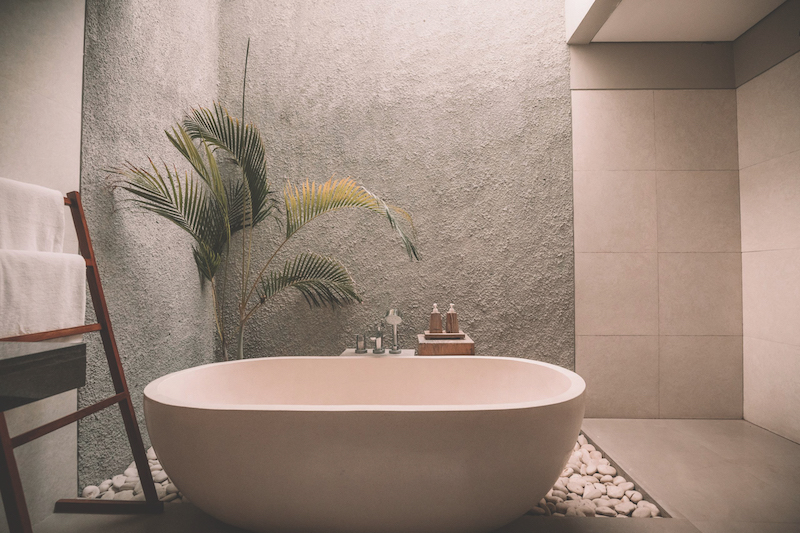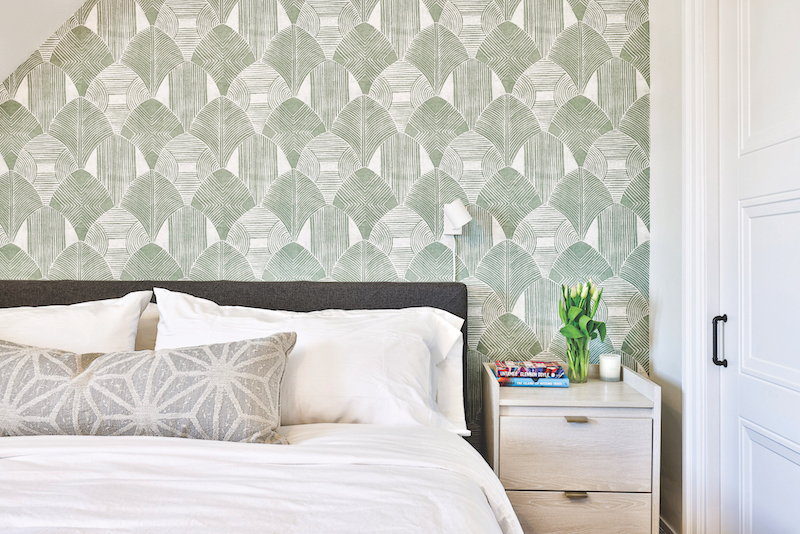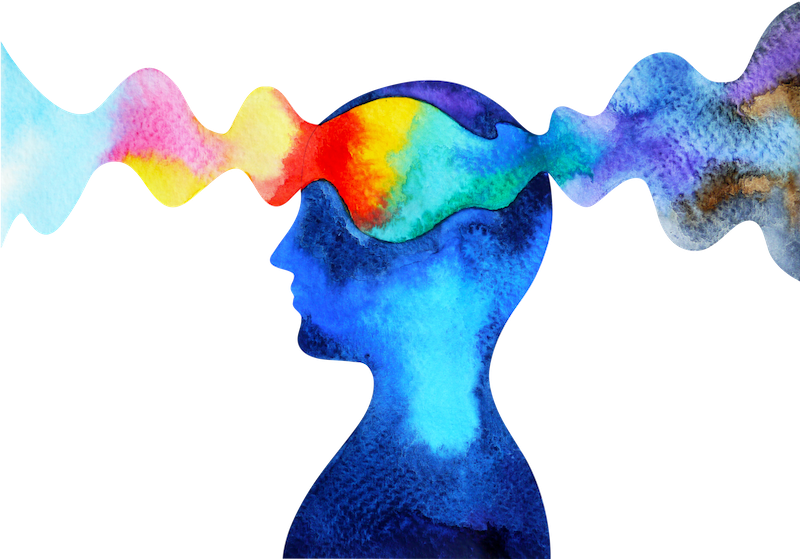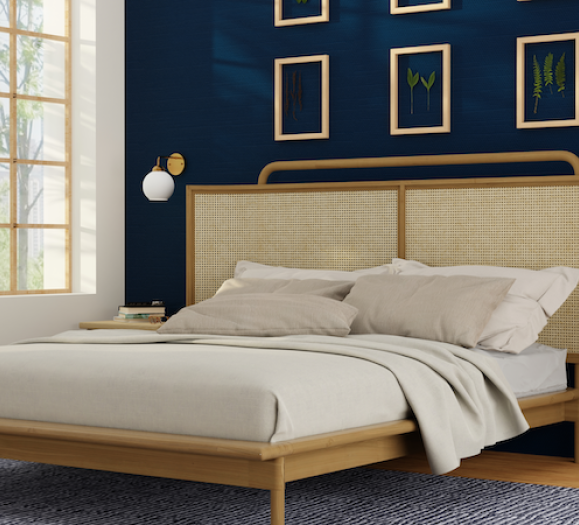Neuroaesthetics is emerging in the design landscape, documenting what creates inclusive, safe and joyful spaces that elevate well-being in residential and commerical environments.
There’s been a slow-moving shift happening in our living environments for decades that science now reveals can impact our well-being. In 1920’s Post World War I, up-and-coming architects created a modern imagery of form and function, and the urban landscape was born. Function and efficiency took precedence over beauty as businesses focused on how to build less expensively. Ornamentation took a back seat, and nature was less considered in the “function” equation. That’s been changing for some time, however.
According to Linda Kafka, Co-founder of The Science of Design Summit, “When form, function and efficiency drive business, beauty suffers.” While some have recognized this change of form over beauty was not creating optimal living spaces, it’s taken a long time to understand the value of that beauty. Kafka quotes Carl Sandberg from 1957: “We live in the time of the colossal upright oblong.”
“He couldn’t find warm words for our urban scapes,” she notes. “We recognized it then, but it’s taken a long time to get away from that mindset. How our environments make us feel impacts our mental health. Our brains react positively to art, to music…it all taps into the feel-good center in our brains. We can leverage that in interior design,” she says.
While beautiful spaces and how they make us feel have been a topic of study for some time, today, scientific evidence is emerging as to how our surroundings can impact our well-being. As it turns out, it’s significant.
Science has been behind the scenes studying the value inherent in beauty and aesthetics to better understand its impact on emotions and physiology for a while now, says Mike Peterson, Founder of Visionary Marketing and Co-Founder of the Science of Design Summit. What scientific studies have found, he notes, is that “something happens in our brains when we see beauty and high design. It elevates chemicals such as oxytocin, chemicals that make us healthier.”
These neuroaesthetic studies have been used to infuse the beauty we see in nature into commercial spaces, such as hospitals, schools and community spaces where healing and focus are essential. It’s been documented that adding elements such as how the light in a space moves like the sun, curves, fractal imagery and natural materials have a positive impact on how we perceive that environment and its effect on our physiology as well as our moods.
According to Peterson, it’s a nod back to our roots, when we didn’t live in the types of structures we live in today. “Advances are being made in science for better understanding who we are by understanding who we have been,” he says. “What we appreciate today is a direct connection to what we adapted to 50,000 years ago. Our brains have adapted to organized complexity [patterns found in nature].” Peterson continues that it’s why we want to look out of windows and why a blank wall isn’t appealing. Kafka adds that we look to solve problems, and we need pattern so we have something
to solve.
Neuroaesthetics is an area of study that explores the effect that color, lighting, textures, sound and how the shape of rooms can have on our sense of well-being, sums up Jaye Anna Mize, Vice President of Home and Lifestyle for Fashion Snoops. And while this is a fairly new field of study, driven by wellness macro trends, it explores the idea that spaces can be more than functional; we can create atmospheres that have a positive emotional impact. In a recent presentation for Maison & Objet, Mize noted that there are several factors driving interest in neuroaesthetic studies and why this is such an important topic today. She cites COVID, online overstimulation, the climate crisis and rising general anxiety as reasons to focus on natural and beautiful spaces. She adds these facts: the McKinsey Health Institute has reported that global findings show widespread and persistent symptoms of distress, depression and anxiety in today’s world. In addition, one in seven people are neurodivergent, according to the National Institute of Health. Neurodivergence encompasses conditions from marginal OCD to being on the autism spectrum, depression, ADHD and other neurological anomalies. Access to nature has been proven to help promote well-being in all of us.
In recent years, wellness, or well-being, has become a factor when considering the design of residential spaces as scientists discover that the beauty of art, nature and other neuroaesthetic triggers impact our emotional and physical health. For example, when it comes to inclusivity (taking into account the needs of the neurodivergent, for example), it’s been discovered that curves, rather than hard angles, can be comforting. “We’ve seen curves for the past four years being extremely strong in furniture applications,” Mize says. “That’s tied to a growing femininity movement, one we’re associating with motherhood.
We’re looking for more of these primal instincts [in home design]. Raw and rooted fundamentals of living are all coming through in a unique design language.” Not to mention that the gentler, softer approach of curves tends to make people feel more comfortable, she adds.

Why Is This Important, and Why Now?
For designers, retailers and home furnishings and lighting suppliers, the study of neuroaesthetics has the ability to change some of the criteria for residential as well as commercial design, and provide new ways to explain to clients how important a designer’s services are in creating a space focused on well-being. “The true opportunities are to lean into the change,” says Mize.
She adds that we’re already seeing attention paid to neuroaesthetics in common spaces such as community centers, stores, playgrounds and parks. We will likely continue shifting from a Brutalist design movement to a more inclusive and calming focus in our spaces, shared and personal. She cites work being done by Bryony Roberts, an architect focusing on designing inclusive spaces that support everyone. The public spaces she creates use sensory engagement that promotes inclusivity. “It’s a signal of change that we’re looking for. We’re hoping our world becomes kinder,” Mize says.
One of the reasons we’re seeing more of a focus on surrounding ourselves with nature and beauty can be attributed to COVID and how “in our spaces” we’ve had to be for the last several years. “COVID scared us when we realized how dependent we are on everything. We would have gone generations losing the things our grandparents taught us,” Mize says. “We’d lost the ability to survive without modern convenience.”
This experience for many had them not only updating their homes for better flow and functionality, but also to bring the outdoors in and surround themselves with beauty and comforting hues, artwork and furnishings, even if they weren’t sure why they wanted or needed that.
Designers, product designers and retailers, many of whom have instinctively designed in ways that impart the beauty that resonates with a harried public, now have a different way to approach clients. There’s scientific backing that their services are more than creating pretty spaces; it’s about bringing in the beauty, the natural elements, the sightlines and more that foster their clients’ well-being.
While the impact of a neuroaesthetic movement may be in its early stages, it’s not really something new in the design community. It’s about understanding and putting a label to what, for many, has been an inherent talent.
With the introduction of neuroaesthetic messaging, says Peterson, “We’re breaking the mold. It’s game over for normal interior design. Designers who want to be successful in the future will embrace the science behind design now. The design industry in five years will no longer be guided by the value perception of creating pretty rooms. Science, technology and the study of neuroaesthetics now document design’s ability to improve health. It’s an important shift in the value perception of our industry.”
Leading the Change
Interior designers have the ability to lead this change into creating more health and wellness-integrated residential spaces, as they focus on the design parameters that scientists are saying have the most significant impact on our well-being from the perspective of feeling at ease and safe in the home as well as in community spaces. And consumers will spend more to attain those feelings, even if it’s not a primary focus. For example, retailers with biophilic-focused stores have reported increases in revenue, according to a University of Washington study. “When retailers implement a green environment in their stores, the product value goes up by 25 percent. Who wouldn’t want to add 25 percent to the value of their goods?” Peterson asks.
For interior designers, adding neuroaesthetic language to their messaging or simply explaining design choices with a focus on creating surroundings that affect a client’s well-being can reap benefits as well.
For Gabrielle Kozhukh-Joo, Founder and Creative Director of Mindwell Design, the first neuroaesthetic design firm in Toronto, embracing this science has helped her to deliver messaging that matches what she’s been doing in her design practice all along. Her business is focused on the interplay between well-being, interiors and science-backed design. She delivers on green building and sustainability in addition to creating beautiful spaces. “My goal is to ignite emotion from the occupants,”Kozhukh-Joo says. “We have a mindset-first approach, and we create spaces that allow for the best version of whoever is occupying that space. We want to unlock human potential.”
Starting with the consultation process, Kozhukh-Joo says a focus on neuroaesthetics is woven into her process. “We don’t just ask how our clients feel. We dig a lot deeper. We want to understand the ‘why,’” she says. “We unravel our clients and help them feel at ease to understand what lights them up. And we’re piloting a whole systems thinking approach to standardizing this in our business via a six-step neuroaesthetic process.”
Kozhukh-Joo is working on codifying neuroaesthetics into her business because it’s still such an open concept as to how to implement this into interior design.
While there have been studies focused on people’s physiological reaction to paintings, for example — raised heart rates, sweaty palms — via wearable and sighting technology, that technology is not quite there yet for interior design, Kozhukh-Joo notes. It is, however, on the horizon. She has partnered with a company that supplies eye-tracking glasses that analyze where you’re looking in a space, and she expects that virtual or augmented reality headsets may become a tool toward better understanding the why behind design choices as well. With the metaverse at the forefront of discussion, these tools will allow consumers to virtually experience spaces and be able to discuss how those make them feel. And while Kozhukh-Joo is testing these options, she hasn’t committed to one just yet. “I want to see the proof of everything. Science backed design works really well, but actual data can support that. We’re getting really close,” she says.
Some of the design choices that support Kozhukh-Joo’s focus on neuroaesthetics include creating quiet nooks for alone time, allowing clients to mentally get to a place where they aren’t held back by their environments. Through her space design, the goal is to build healthy rituals that allow her clients to achieve a desired state of mind.
She also focuses on natural elements, curvilinear design and geometrics. “From an aesthetic perspective, an arch can feel more welcoming than harsh edges or sharp angles,” Kozhukh-Joo says. “Our goal through a neuroaesthetic focus is to create a state of calm and connectivity and reinvigorate through a multisensory environment.”
Jenny Pippin, Founder of Pippin Home Designs, in Lake Norman, NC, has been focused on nature and creating health-friendly homes for her clients since she started her business in the 1990s. Pippin is an architect and focuses on building homes that blend into the environment, rather than removing the natural elements to make space for a residence. Her focus is on how a home best affords the homeowner the brilliant views, natural daylighting and other elements that drew them to a land parcel in the first place.
“The first thing I do is walk the property to see what they like. We orient rooms and windows to take advantage of the views. We add skylights, sun tunnels and additional ways to get the benefits of natural light while maintaining privacy,” she says. “We use a lot of natural materials, such as live-edge wood, and we put plants where we can. And we add a water feature somewhere. Water helps people feel good.”
From there, she also focuses on accessibility — wider hallways, for example, to accommodate wheelchairs or walkers if needed, indoor ramps, elevator shafts and more — taking into account her clients’ current needs, projecting what their needs might be in the future and the needs of visitors. “Wider hallways and doors make the space feel more comfortable for everyone,” Pippin says. “And you don’t have to go back and retrofit later.”
To ensure she is designing a home that will provide a sense of well-being, Pippin takes the time to really understand what her clients are hoping to gain from this space. “I have a checklist of homework that a client has to do before they meet with me,” she says. “I require a survey of the property, for example. Having the survey shows me where the sun rises and sets on the property as well as the slope. I talk to the client about how the passive sun is going to work and learn where they like to have sun and where they’d prefer to avoid it. We also walk through the property to assess the natural features we can take advantage of.”
In many of the properties Pippin designs, she takes into account how angles and walls can affect the experience in a home. In addition to those wider doorways and hallways, she’ll incorporate curved and angled walls that break up the boxiness of the modern-day home. “There’s a value in adding that aesthetic,” she says.

Embracing Change
Neuroaesthetics is more than a new buzzword for the interior design and home furnishings community, says Peterson. It’s science validating the importance of design that focuses on well-being. “It’s not just a discipline for how our spaces look,” he continues. “It’s an emerging field, and designers need to have a better understanding of interior design as an alternative health resource.”
“Designers shouldn’t be afraid of neuroaesthetics; they should be embracing the fact that there’s science in design,” Kafka adds. “Neuroaesthetics is simply the convergence of science and design.”
For those already on the neuroaesthetics trajectory, there isn’t a downside to understanding how design impacts our well-being. It’s instead validating what so many in the industry already understand and incorporate into their businesses day to day. It is an adjusted way of thinking, possibly, but it’s one that presents opportunities to better understand and communicate with clients.
Through understanding the science behind design, we have the ability to create environments that are more inclusive and deliver smarter, more thoughtful solutions, says Mize. “The idea with neuroaesthetics is it allows us to be more thoughtful designers.”







